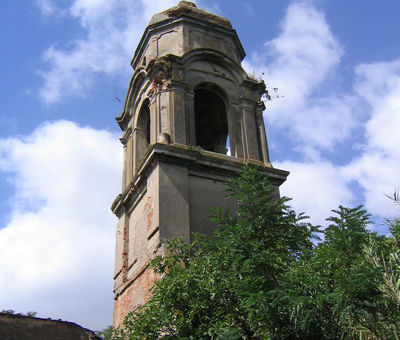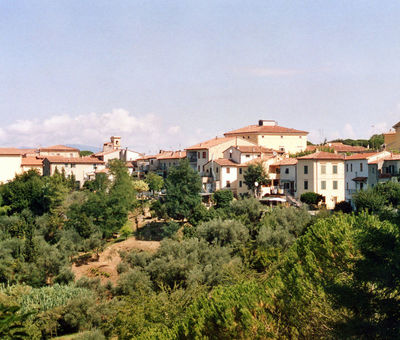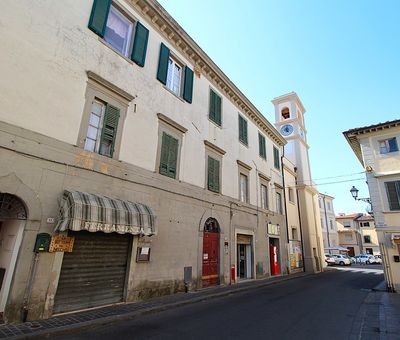Marta's love for Pirandello
The panoramic views of the Pisan Hills have always brought attention to this village filled with villas belonging to noble families, built here in search of peace and tranquility. The town as we see it today was almost entirely rebuilt after it was destroyed in 1433 during the war with Florence; in particular the castle, which until then was the symbol of the town. The actress Marta Abba, Luigi Pirandello's muse and lover, also had her villa in Fauglia. The villa is the location of a work by the master, Villa Trovarsi, which he allegedly dedicated to the actress. A huge correspondence between the two has recently been recovered and restored. After the formal letter that she wrote to thank him for having used her as inspiration, Pirandello wrote to her up until 1936, the year of her death, 560 letters. She stopped at 238.
A landscape that inspires painters
The Pisan countryside was much loved by Macchiaioli painters. Giorgio Kienerk lived in one of the villas in Fauglia for a long time before he died. Born in Florence, he was a pupil of the sculptor Adriano Cecioni and the painter Telemaco Signorini. Along with other young Tuscan painters, he was spokesperson for a movement that looked to new international trends. His stays in the Pisan countryside led to works portraying the wheat fields and the fiery summers. Thanks to the works that his daughter Vittoria donated to the Fauglia community, a museum dedicated to Kienerk was opened where you can find oil paintings, bas-reliefs, sculptures, engravings and lithographs. Kienerk died in 1948 in the family villa at Poggio alla Farnia.
The battle of the bees
Of the many battles that Pisa fought against Florence here in Fauglia, they remember most the one in which the women were the protagonists. The women found themselves alone defending a castle, which they did so well that the Florentines went into flight. The records tell us that in the year 1364, the women "behaved like very talented soldiers" and having no other weapons with which to fight, they confronted the enemy soldiers by throwing "an infinite number of bee baths" upon them. They used hives as a defense weapon and the strategy was successful because the accounts tell us that "these animals entered the visors of the soldiers and stung their faces and eyes, causing so much annoyance that they, frightened, retreated back".







